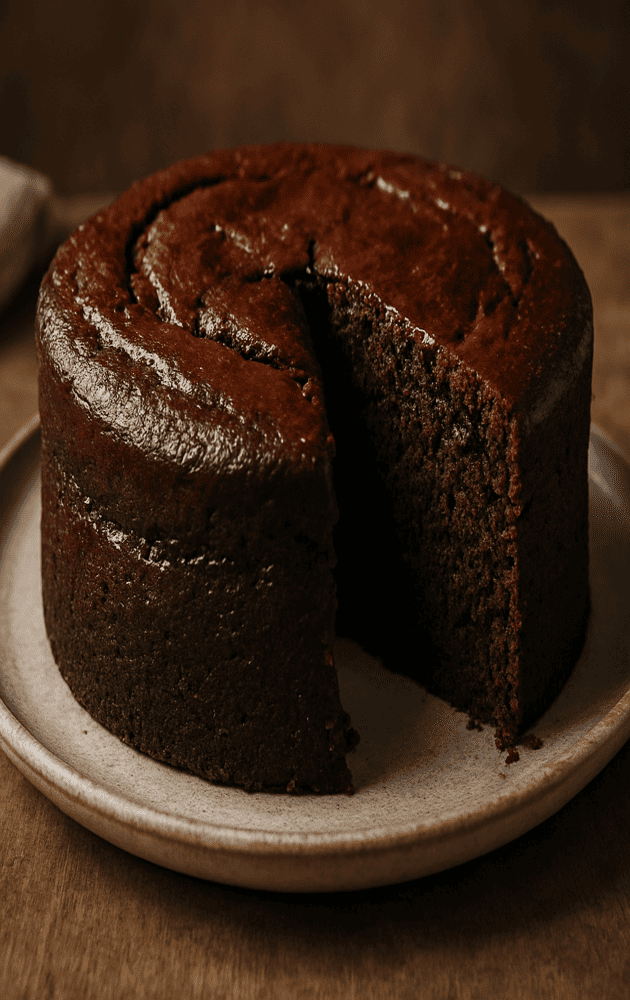Few flavors stir as much emotion as a good chocolate cake. It’s not just a dessert — it’s a hug on a plate. It’s the smell of grandma’s kitchen, the birthday party treat, the comfort after a long day. It’s that bite that soothes, connects, and delights. That’s why making a chocolate cake that melts in your mouth is more than just a baking achievement — it’s an act of love.
In this article, you’ll learn how to make a chocolate cake that’s deeply flavorful, irresistibly moist, and incredibly soft. One that gently disappears with each bite, leaving a lasting impression. We’ll draw on key techniques from previous articles — such as mixing (article #11), leavening agents (article #12), and oven temperature (article #10) — and turn them into practical steps for creating a chocolate cake that comforts as much as it impresses.
What Makes a Chocolate Cake “Melt in Your Mouth”?
It’s not about magic tricks or secret ingredients. The texture that melts softly comes from a balanced mix of moisture, fat, mixing technique, and quality chocolate. It’s a combination of baking science and genuine care from the baker.
Let’s explore the elements that make all the difference.
1. Choose the Right Chocolate with Intention
Great chocolate cake starts — of course — with great chocolate. Both cocoa powder and melted chocolate need to be chosen thoughtfully, as they bring richness and depth.
- Natural cocoa powder adds intensity and a beautiful color.
- Dutch-processed (alkalized) cocoa has a smoother, less acidic flavor.
- Bittersweet chocolate (50–70%) melted into the batter adds creaminess and complexity.
A combination of natural cocoa powder + quality bittersweet chocolate creates an ideal flavor and texture balance. Avoid overly sweet or low-quality chocolate — true flavor comes from honest ingredients that respect chocolate lovers.
2. Combine Butter and Oil for Ideal Texture
Fat is key to creating a soft, moist, melt-in-your-mouth texture. Butter adds structure and flavor, while oil keeps the cake tender and moist.
- Butter = flavor and richness
- Vegetable oil = lightness and long-lasting moisture
Together, they result in a cake that stays delicious even the next day — or the one after that.
3. Add a Tangy Liquid Ingredient
Acidic ingredients like yogurt, buttermilk, or milk with vinegar react with baking soda to create bubbles that lighten the batter. They also add creaminess and tenderness to the crumb.
If you don’t have buttermilk, combine 1 tablespoon of white vinegar with 240 ml (1 cup) of whole milk and let it sit for 10 minutes before using.
4. Mix Gently and Just Enough
Even with perfect ingredients, overmixing can ruin your cake. As mentioned in “Mixing Matters” (article #11), overmixing activates the gluten and makes the cake dense. Mix just until the batter is combined. Use a spatula to finish — treat the batter with the same care you’d offer to someone you love.
5. Bake with Patience and Precision
Don’t let a rushed bake ruin a perfect batter. Baking too hot dries the outside while the inside stays raw. For chocolate cakes with lots of moisture and fat, bake between 160°C and 175°C (320°F to 350°F).
Avoid opening the oven in the first 25 minutes and always bake on the middle rack, where heat is more evenly distributed.
Recipe: Chocolate Cake That Melts in Your Mouth
Dry ingredients:
1 cup all-purpose flour
3/4 cup natural cocoa powder
1 1/2 teaspoons baking powder
1/2 teaspoon baking soda
1/4 teaspoon salt
Wet ingredients:
2 large eggs
1/2 cup melted butter
1/2 cup vegetable oil
1 cup brown sugar
1/2 cup white sugar
1 cup plain yogurt or buttermilk
1 teaspoon vanilla extract
120 g bittersweet chocolate (50–70%), melted
Instructions:
- Preheat the oven to 170°C (340°F). Grease and flour a medium round cake pan.
- Sift together the dry ingredients in a bowl and set aside.
- In a separate bowl, whisk eggs, sugars, oil, and melted butter.
- Stir in the yogurt, vanilla, and melted chocolate.
- Gradually fold in the dry ingredients using a spatula, mixing just until smooth.
- Pour into the pan and bake for 35–45 minutes.
- Use a toothpick to check: it should come out moist, not wet.
The result? A rich, dark cake with a moist center, gentle crumb, and just the right balance of intensity and softness. Serve it as is, with coffee, or dressed with ganache, whipped cream, or berries. Or serve it with nothing but a smile — the kind only chocolate can create.
Final Thoughts
Making a chocolate cake that melts in your mouth isn’t about perfection — it’s about creating a moment of comfort, nostalgia, and joy. When you understand how chocolate behaves, how fats and acids interact, and how to mix with care, you’re not just baking — you’re crafting a memory.
In the next article, we’ll explore “Secrets of Moisture: How to Keep Your Cakes Soft for Days”. Because a good cake isn’t just great on the first bite — it stays delightful until the very last slice.
Ready to make hearts melt with chocolate?
